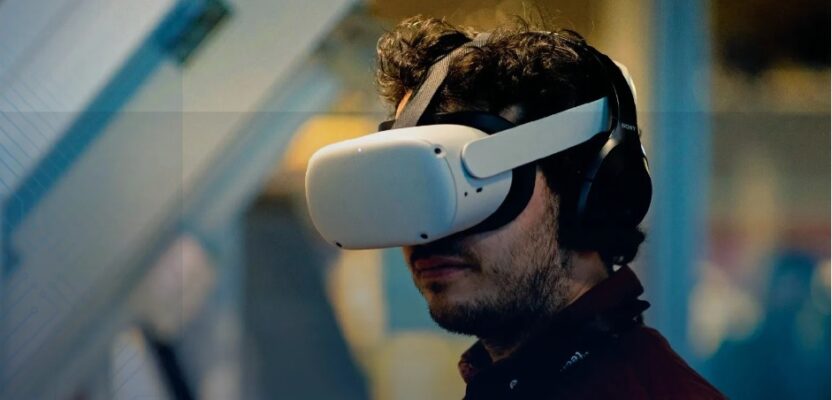Using powerful simulation algorithms, this young and award-winning acoustics software startup from Iceland is making sound visible. No wonder it’s already creating a buzz in the BIM community.
For Finnur Pind and Jesper Pedersen, success started inside a dark and windowless basement. Backed by a research grant in 2020 and a free room down in the acoustics lab of the University of Iceland, they started developing an innovative tool that will effectively model how sound moves inside built spaces. Their aim was to produce the highest fidelity possible than what currently available acoustic simulation programs in the AEC sector can achieve.
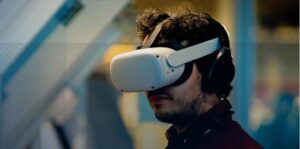
Treble allows building designers and their clients to be able to experience the soundscape of a design in an immersive, real-time audio-visual virtual experience even before the building is constructed.
Designing buildings with good architectural acoustics is important. As we spend most of our waking hours indoors, the acoustics of our internal surroundings can significantly affect our well-being. Thus, buildings must be able to control how soundwaves bounce off its interior walls and objects so that noise levels can be reduced while the clarity of our voices and other essential sounds can be maximized.
From his own PhD research experience at the Technical University of Denmark (DTU) and his previous work as a consultant, Pind already knew that sound simulation and spatial audio softwares available in the market can still be improved. So, he reached out to Pedersen, a good friend from their university years and who himself is a simulation specialist in the hearing aid industry.
“Hey, you know a lot about sound simulation, I know a lot about sound simulation. I have this pretty cool prototype of a new technology to simulate sound, so should we do something with this together?” recalled Pind asking his old pal.
Pedersen said yes, and soon after they hung a huge photograph of Mt. Esja, a popular hiking trail just outside the capital of Reykjavík, on the laboratory wall.
“That picture helped us lessen the claustrophobia while working in the basement,” said Pind.
By the end of the year they had formed Treble Technologies (www.treble.tech), a startup that develops sound simulation and spatial audio software. Their original tandem has now grown to more than 20 highly educated and experienced employees (wittingly called Treble-makers). “We are growing fast,” said Pind. He is now Treble’s CEO, while co-founder Pedersen is the company’s chief operating officer.
According to Pind, starting a company can be both challenging and exciting. “It can be quite an emotional rollercoaster,” he said. “But the motivation for making a difference is what keeps you going, especially when some positive milestones are reached every now and then.”
Sounds like a winner
Fast forward a few months and an important milestone has indeed been achieved. In November 2021, Treble Technologies won the Top Smart Building and Smart Construction Innovator of the Year award at the BIM World event in Munich, Germany. Winning that coveted prize at one of the world’s biggest AEC digitization events has “led to inbound interest from great companies,” recalled Pind. “It certainly gave us a bit of a confidence boost.”
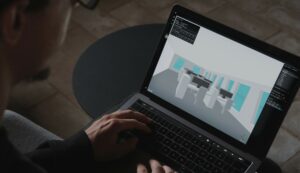
There are major benefits to linking BIM tools with an acoustic simulation product.
Treble is now ready to join the big leagues, especially in attracting talents. Because acoustics simulation is a very specialized field in the AEC industry, bringing highly-skilled people to Iceland is a must. Fortunately, the country has a booming tech industry that is supported by a world-class IT infrastructure. It is ranked third in Europe and fourth in the world in terms of having a highly developed information and communication technology sector.
“The ecosystem around innovation and startups is quite powerful here and this has helped us a lot to get going,” said Pind.
Currently, many of the Treble-makers are experts in acoustics, but there are also professionals in software engineering, high-performance computing, computational geometry, business, and marketing. “Many are happy to relocate to the country and join our team. It helps that we are on an exciting mission to revolutionize the world of sound and that’s a great morale in our company.”
Another morale booster is their new workplace right in the center of Reykjavík, a far cry from the dark laboratory basement where everything began for them two years ago. “We have just moved to our new office where we have a fantastic view of Mt. Esja, so it feels like we have made some progress with our company,” the CEO said proudly.
Sounds like fun
For a software engineer, Pind is not just someone who dabbles in acoustics. He is an avid music fan and was quite an active musician in his younger years.
“All these factors have led me into studying acoustical engineering, and from there I got into the field of virtual acoustics.” At work, he usually likes to listen to ambient and electronic music by Aphex Twin, Brian Eno, and Harold Budd. “I have been a complete sound nerd for as long as I can remember.”
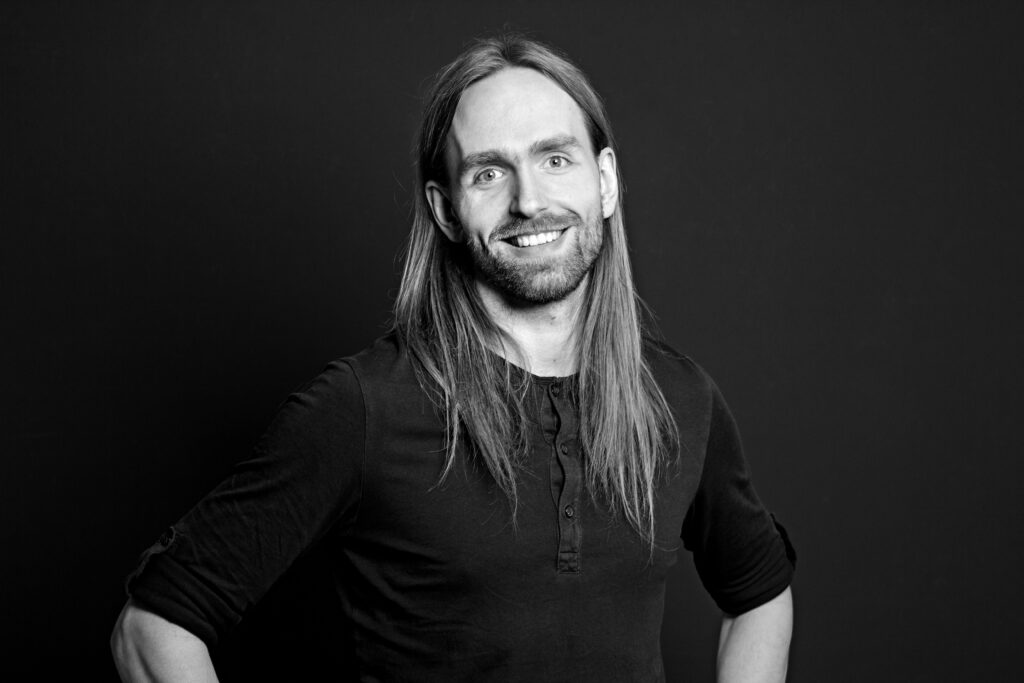
“I have been a complete sound nerd for as long as I can remember.” – Finnur Pind, CEO and co-founder at Treble Technologies
And for an acoustics company, what is working with sound if there is no music? Music is part of the company’s DNA that they even have a playlist to help them break the workday.
“We have this pretty fun tradition in the office to do a four-minute plank together every day at 2 p.m.,” shared Pind. “We have a playlist for that, which consists only of some upbeat four-minute songs. It makes us Treble-makers sweat a bit, which is always good!”
Pind brings this positive affection for sound into the company. Treble’s technology can recreate authentic ambient sounds in virtually designed spaces, helping both designers and clients to experience how the building hums and feels via immersive 3D models. Users can both hear the sounds and see the design as they move about and interact with the building’s virtual model in real-time.
In this interview, which has been edited for length and clarity, Pind offers more than sound bites. He talks in detail about the importance of good acoustics in architectural design, the role of Building Information Modeling in acoustics simulation, and what makes Treble excellent.
First and foremost, how cutting-edge is Treble as compared to other BIM-acoustics tools already available in the market?
We have a threefold value proposition. First, our simulation algorithms enable much higher accuracy of simulation compared to what competing solutions offer. We are introducing a so-called “wave-based” paradigm to sound simulation, and this functionality is the fruit of many years of R&D, originally coming from the academic world.
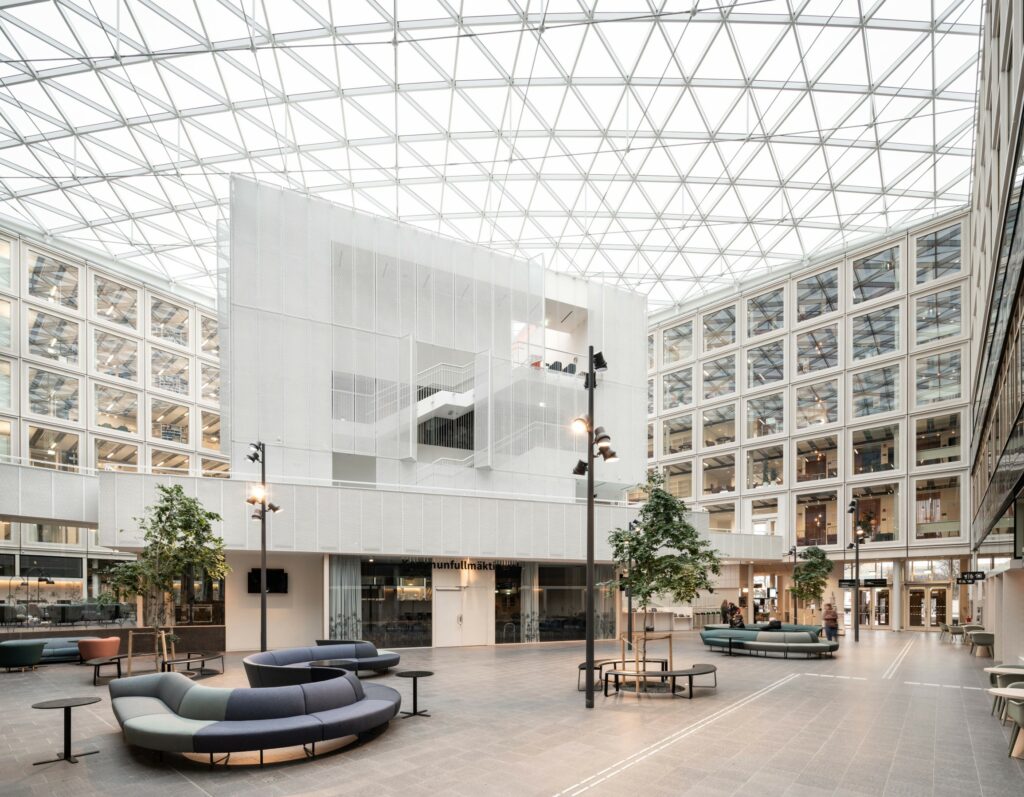
Treble collaborated with Henning Larsen Architects who were designing a new city hall in Uppsala, Sweden. Using an audio-visual virtual mock-up of the building, the architects could make informed decisions relating to the acoustics.
Second, thanks to our integration into BIM tools, we can greatly improve the associated workflow relating to sound simulation, enabling designers and engineers to work more efficiently. And lastly, the ability to not just get out graphs and numbers, but to instead be able to experience the soundscape of a design in an immersive, real-time audio-visual virtual experience.
Good acoustics is an important factor to consider when constructing a building. But it is often overlooked during the architectural design process. Why do you think that is?
This is indeed a huge problem and is probably partly explained by the fact that sound is an invisible and somewhat subconscious phenomena. But luckily things are moving in the right direction. The awareness regarding the importance of good acoustics has increased substantially in recent years and regulatory requirements and building certifications (such as LEED, BREEAM, and WELL) have become stricter when it comes to acoustics and noise.
As soon as designers and engineers get powerful digital tools into their hands to design acoustics in a seamless manner, and simply experience the design on their own skin during the design process, I am optimistic that sound and acoustics will get the attention it deserves in the design process.
So how important is good acoustics for a building?
Research has consistently shown that acoustics have a major influence on people’s health and well-being. In offices, productivity improves when the acoustics are good and stress levels go down. In hospitals, people heal faster and there is less pain medication usage and rehospitalization associated with having good acoustics. In schools, students perform better when the acoustics are good. The list goes on.
What types of buildings should have good acoustics?
Actually, almost all building types should have good acoustics. Many people associate acoustics with concert halls, understandably, and it is absolutely important to have good acoustics in such buildings. But it is no less important in “everyday” buildings, such as hospitals, office buildings, schools, restaurants, and homes.
How can BIM technology help enhance the acoustic environment of spaces to meet its design intent?
The acoustics of buildings, be it room acoustics, sound isolation, noise from technical installations, environmental noise, etc., is governed by the geometric shape of the building, as well as the materials and the sound sources placed in and around the building.
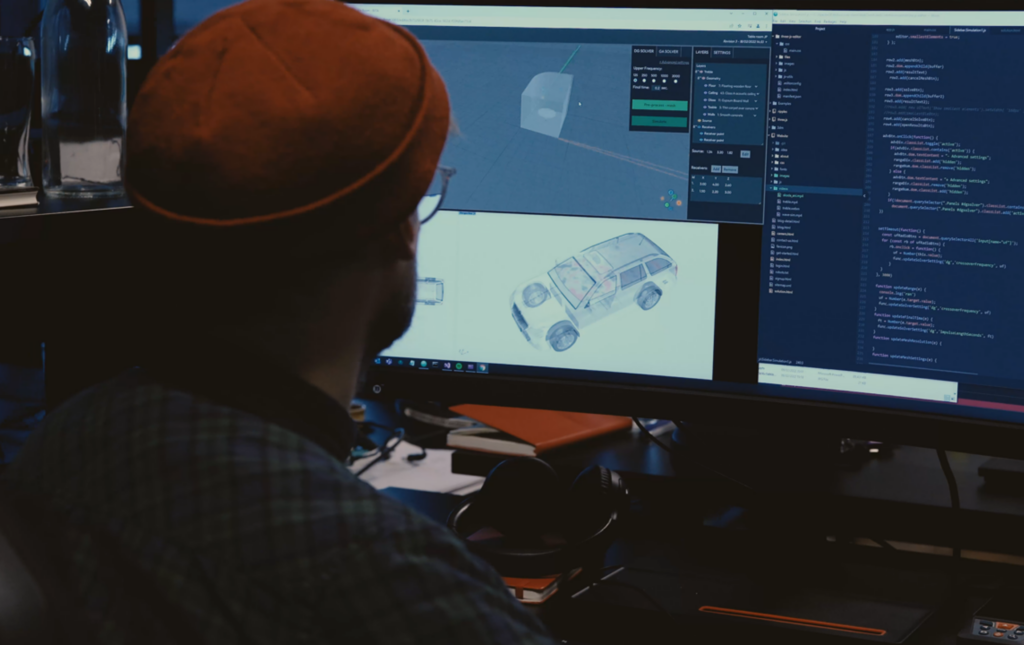
Sound simulation have applications not just in the AEC industries, but also in the automotive sector, consumer electronics, and in the metaverse, too.
In BIM, a lot of this information is already included in the model, which makes it easier and more seamless to evaluate the acoustic performance of building plans. This is the major benefit of linking BIM tools with an acoustic simulation product, and this is indeed something we greatly emphasize in Treble.
Why create a company like yours that is focused on improving acoustics? Is there a market niche?
Being able to simulate and render sound efficiently and accurately has incredibly widespread applicability. It can be used in building design, to enable architects and engineers to take sound into account during the design process, which will result in healthier and more sustainable buildings. Noise and poor acoustics in the built environment have a significant negative impact on people’s health, well-being, and productivity, and by offering powerful digital tools for designing acoustics and soundscapes that can help mitigate this.
Looking beyond the building industry, there are applications in the automotive sector, in the consumer electronics sector, and in the metaverse, too. In all cases, the ultimate objective is to improve listening experiences, reduce noise, and enable people who are working with sound to work in a more effective and engaging manner.
For those who are not familiar with acoustics science, what is the main technology behind Treble?
The main algorithms that lie behind Treble simulate how sound radiates from a sound source, bounces around a 3D space, and reaches a listener. The simulation results can then be analyzed in various ways, and, moreover, they can simply be listened to in an immersive and interactive audio-visual digital experience.
This makes it very intuitive to evaluate the sound quality of a building and opens up new opportunities to have sound be an actual design parameter in building design (as opposed to just having the objective of minimizing all sound).
So how does Treble make use of BIM technology in designing acoustically good spaces?
It has particularly to do with extracting geometry and metadata of 3D models, and using this to carry out an acoustic simulation. This way, it becomes relatively seamless when designing buildings to evaluate the sound part of it as well.
Share with us an interesting project that you have already completed using Treble.
We collaborated with Henning Larsen Architects who were designing a new city hall in Uppsala, Sweden. The architects currently don’t have any digital tools to help them make informed decisions relating to acoustics, but with our tech, they could build up a virtual mock-up of selected spaces in the building, including the atrium and selected auditoriums.
In the mock-up, they could play around with different materials and other design parameters and simply experience how these design changes affected both the aesthetics but also the sound experience.
In the end, the architects came up with a brilliant design that beautifully struck a balance between being visually stunning and simultaneously ensuring excellent acoustic conditions – something that would not have been possible without these digital tools.
What projects are you currently working on?
We are working with numerous companies on pilot projects both in the AEC industry and also in different sectors, such as tech and automotive. Then, of course, we are working hard on our software, which is our main project and product.
Let’s talk about your plans for the company. Do you see Treble expanding its workforce in the next five years?
We are sensing a lot of interest in our offering and if we are to be able to meet all this interest, we’ll have to continue to grow.
And lastly, what exciting things can we expect from Treble in the coming months?
We will be doing a soft launch in fourth quarter of 2022 for invites only as we perfect our product. But in the first quarter of 2023, we aim to officially launch our product and software for the public. Our current product is built for the AEC industry, but after the release of the first version we will, in the coming years, start to expand to automotive, professional audio, virtual reality/augmented reality (VR/AR), and even explore the metaverse.

